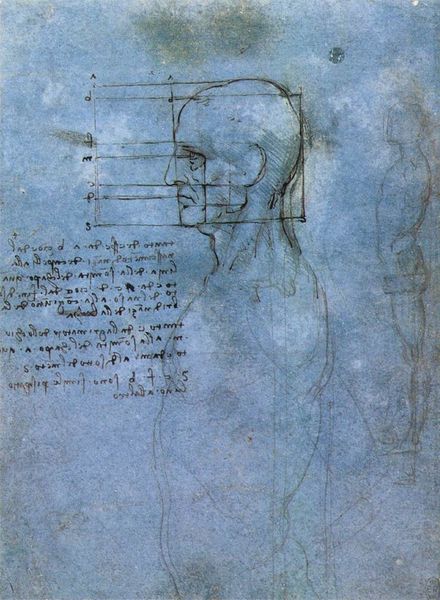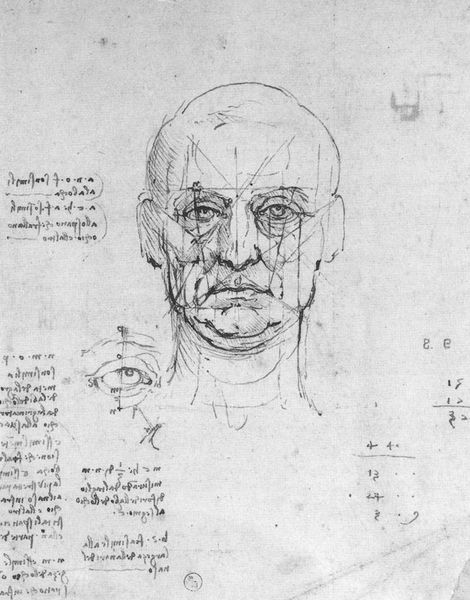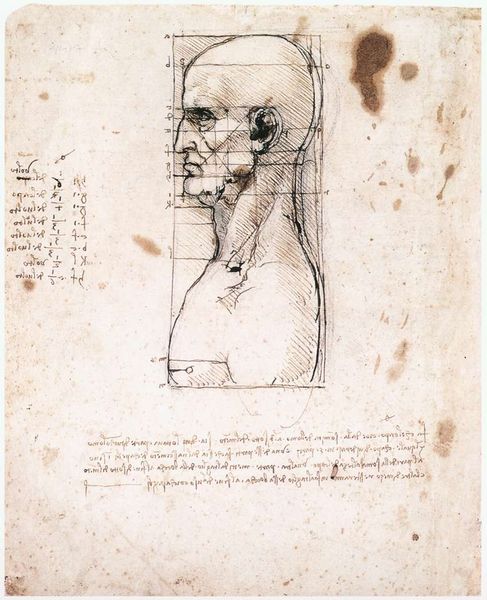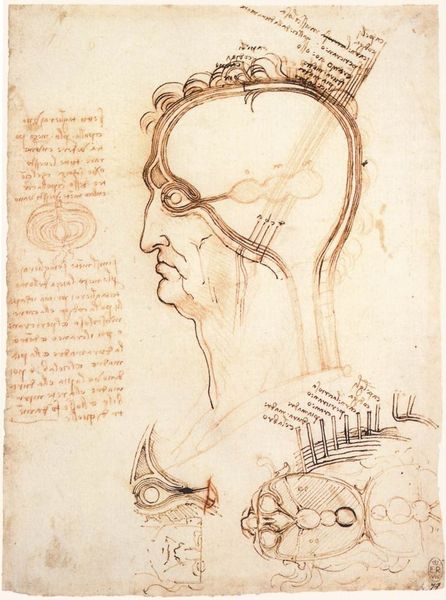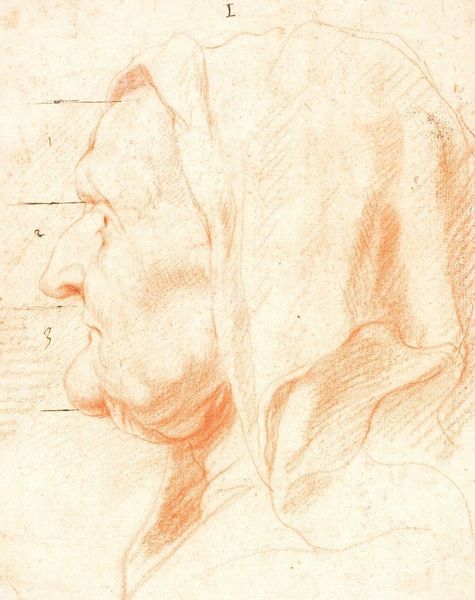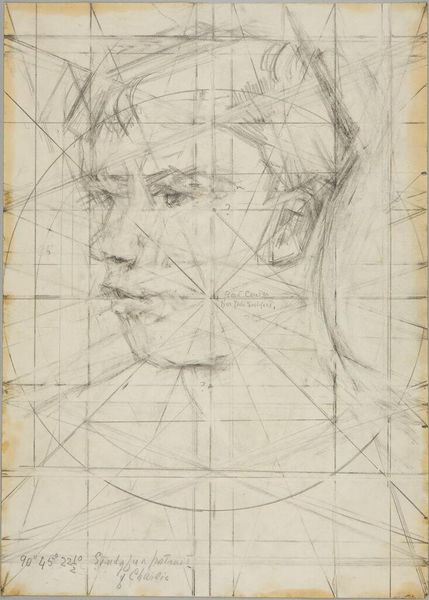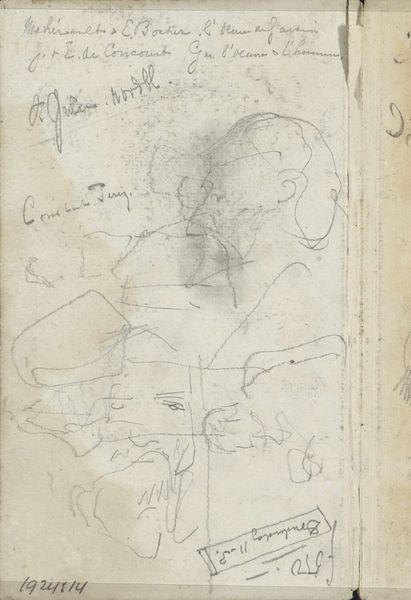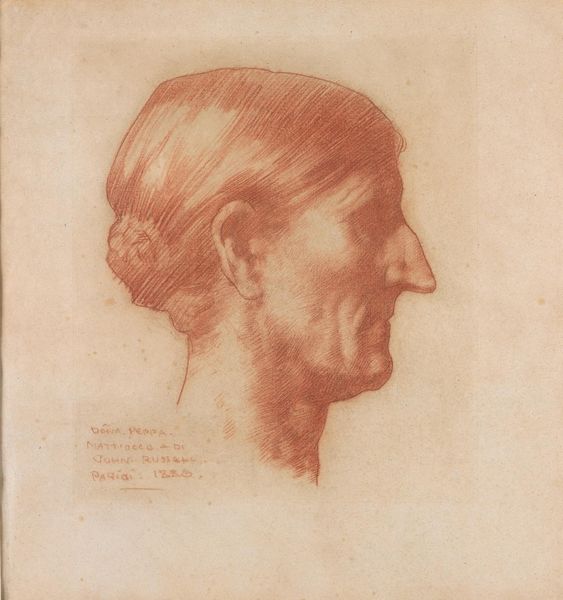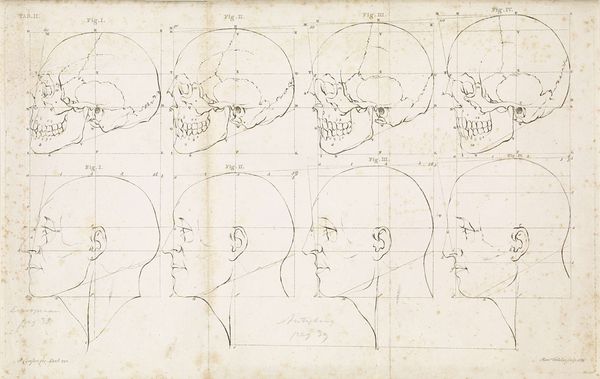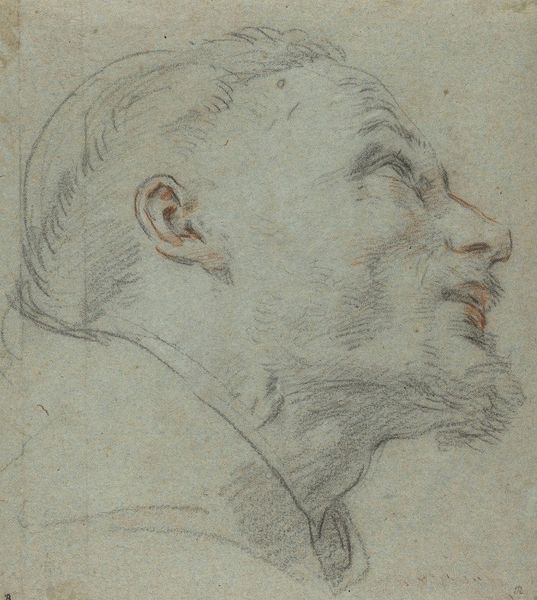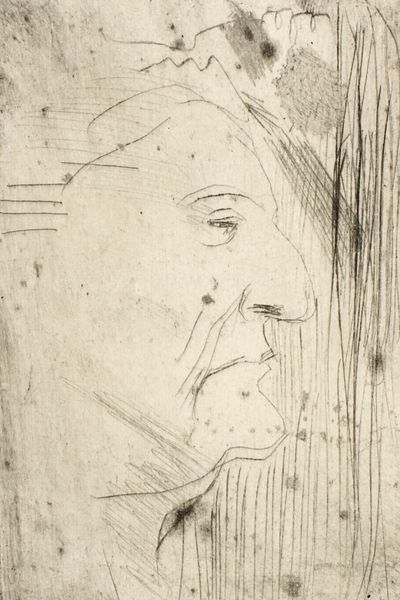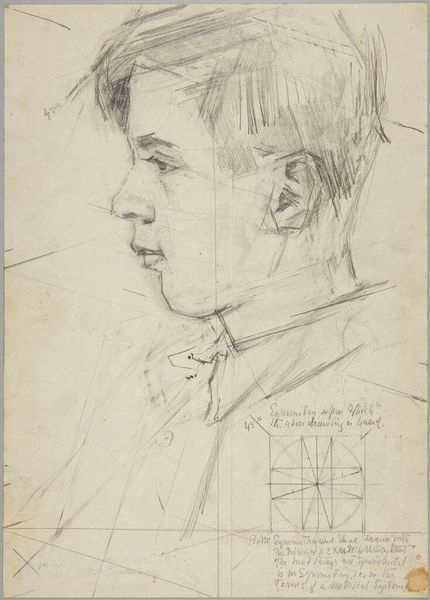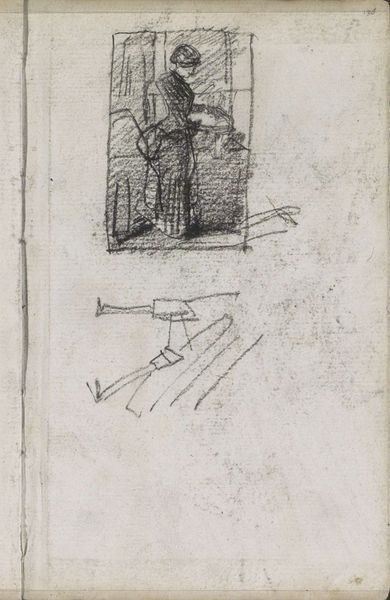
drawing, paper, pencil
#
portrait
#
drawing
#
paper
#
form
#
11_renaissance
#
pencil
#
line
#
italian-renaissance
Dimensions: 15.3 x 21.3 cm
Copyright: Public domain
Editor: Here we have Leonardo da Vinci's "The Proportions of the Head," made around 1490 using pencil on paper. It strikes me as a very technical, almost architectural study. How do you interpret this work? Curator: Well, immediately I’m drawn to the physical nature of this drawing. The materiality speaks volumes. We have the paper itself – probably a costly material at the time, think about the labour involved in its production, then the use of pencil, which was developing as a medium. It’s fascinating to consider the relationship between the preciousness of the paper and the seemingly utilitarian nature of the drawing, right? It wasn’t "art" yet in the way that term is constructed today. It was fundamentally connected to craft and industry. Editor: So, it’s not just about the head itself, but about the paper, the pencil, and the entire process of creating the drawing. Curator: Precisely. Consider what it means to ‘produce’ knowledge in this way, versus the types of dissemination of information, say through artisanal instruction from master to pupil or early publishing methods. It challenges our idea of the solitary genius, no? This sheet, these materials, imply a whole network of makers and means. Editor: That really reframes how I see Da Vinci. I usually focus on his genius, the idea of the singular creative force. Curator: Exactly. Focusing on material and mode of production forces us to re-evaluate those often romanticized ideas of artistic creation. Does thinking about it this way change your opinion of his practice? Editor: Absolutely. I’m beginning to see the work in its historical moment – it shows just the final part of much wider set of procedures. Curator: I agree, viewing the drawing as part of a web of labor gives us much needed depth when contextualising artistic achievement.
Comments
No comments
Be the first to comment and join the conversation on the ultimate creative platform.
